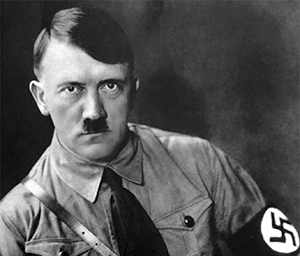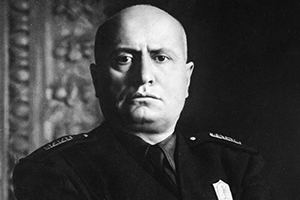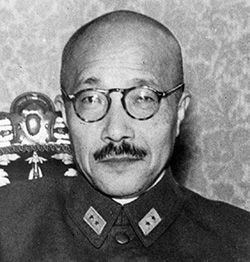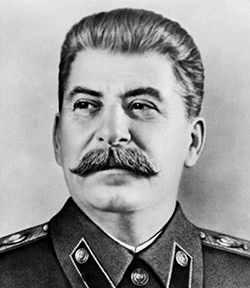Soon after the end of the First World War, great dictatorships began to take shape which, born out of the ashes of one conflict, encouraged, if not provoked, another, far more catastrophic one: Nazism in Germany, fascism in Italy, militarism in Japan and communism in the Soviet Union.
 In Germany, Adolf Hitler capitalised on the German people's social resentment and dissatisfaction with the humiliating Treaty of Versailles, inflation and economic depression by promising to reunite "Greater Germany" by restoring it to the role of a great military power. But he was to have absolute control over the nation. Hitler became leader of the National Socialist German Workers' Party on 24 February 1920. He assumed full power on 14 July 1933. Hitler's strategic plan was to establish a new European order by creating a strong empire through the occupation of territories to the south and east of Germany. After occupying France and using air power to force Britain to sue for peace, he would turn to the Soviet Union to conquer what Hitler called Lebensraum, the agricultural lands of the Ukraine, the oil wells of the Caucasus and, at one point, flirting with the idea of joining forces with the Afrika Korps at the Suez Strait.
In Germany, Adolf Hitler capitalised on the German people's social resentment and dissatisfaction with the humiliating Treaty of Versailles, inflation and economic depression by promising to reunite "Greater Germany" by restoring it to the role of a great military power. But he was to have absolute control over the nation. Hitler became leader of the National Socialist German Workers' Party on 24 February 1920. He assumed full power on 14 July 1933. Hitler's strategic plan was to establish a new European order by creating a strong empire through the occupation of territories to the south and east of Germany. After occupying France and using air power to force Britain to sue for peace, he would turn to the Soviet Union to conquer what Hitler called Lebensraum, the agricultural lands of the Ukraine, the oil wells of the Caucasus and, at one point, flirting with the idea of joining forces with the Afrika Korps at the Suez Strait.
This would have changed the entire geopolitics of the Middle East and the Mediterranean, to the total detriment of Britain's Central Asian possessions.

In Italy, Benito Mussolini founded the Fascist Party on 9 November 1921 and became Prime Minister on 31 October 1922. In January 1925 he assumed de facto dictatorial powers. In addition to capitalising on the discontent over the "mutilated victory" of the Treaty of Versailles, he promised the Italian people that he would restore Italy to its former greatness. Following the example of the Libyan colony, the desire for expansion in East Africa came to fruition with the invasion of Ethiopia. With Italy's entry into the war, Mussolini hoped to take advantage of the German army's successes to participate in the division of territories for his own benefit. The weakness of the military structure was quickly exposed on the north-western border with France and later in the campaigns in North Africa and Greece, where Mussolini was forced to ask Hitler for help. Together, Hitler and Mussolini sent substantial military forces to Spain between 1936 and 1939 in support of Francisco Franco, helping him to seize power and establish a dictatorship similar to those in Italy and Germany. For the German Wehrmacht, it was an opportunity to try out new tactics and military equipment, including aircraft and tanks, produced in Germany as a result of the massive rearmament programme unilaterally decided by the Nazis since 1935, against which no Allied power in the First World War had taken a stand.

Japan's militarism was represented by General Hideki Tojo. A career soldier and Minister of War from July 1940 to July 1944, he was Prime Minister of Japan from 17 October 1941 to 22 July 1944. His fierce determination, an uncompromising expression of the extremist tendencies of the military caste, led to the downfall of the moderate government and the triumph of the bellicist tendency. On 17 October 1941, he formed the new government, of which he assumed the presidency and the ministries of War and Interior.
On 18 September 1931, Japan invaded the Chinese region of Manchuria. In 1932, it began to invade China; in the same year, it withdrew, while at the same time launching a campaign to blockade China's economy. Fighting resumed in July 1937; by 1938 the Japanese Empire had completed its economic blockade of China by controlling its ports, industries and railway hubs.
The start of the war in Europe gave the Japanese the opportunity to extend the war to Southeast Asia, through what they called a great sphere of co-prosperity in East Asia, subject to the defeat of the American Pacific Fleet.

In the Soviet Union, Josif Stalin, who succeeded Lenin after his death in 1927, had used an iron fist against the landed peasantry, persecuted opponents and promised a dictatorship of the workers' party.
Among the terrible purges of the 1930s was the one in which 35,000 officers out of 144,000 in the Red Army were sentenced to death or imprisoned.
This, together with Stalin's initial indecision, was the cause of the German army's reckless advance during Operation Barbarossa, the invasion of the Soviet Union that began on 22 June 1941 and resulted in millions of casualties.
With the earlier signing of the Non-Aggression Pact on 23 August 1939, the two sides defined the spheres of influence of the Third Reich and the Soviet Union for the areas near each other.
Stalin's interest was to create buffer zones between the two nations: Polish territory was divided between the Soviets and the Germans, while the Red Army occupied the Baltic republics.

